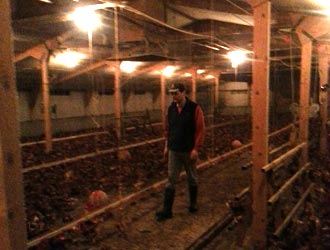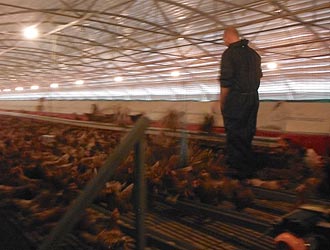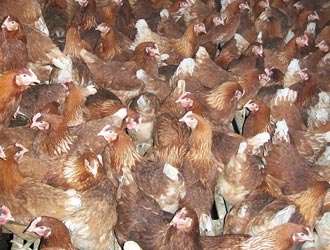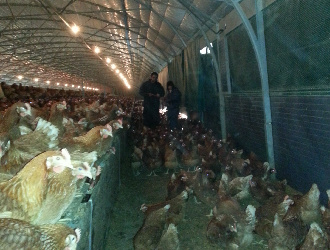Inspecting the birds
Flocks should be walked several times a day throughout rear and lay and attention should be paid to the behaviour of the birds. In this way any signs of injurious pecking should be spotted early enough so that it can be managed to prevent further escalation. Having a variety of people walking the birds will also increase the likelihood that potential problems are spotted before they become problems. Getting a variety of people to walk the birds will also help to get them used to different people and reduce their fearfulness. This is especially important during rear, as the chicks will eventually be exposed to different people when they are transferred to the laying house. Alternating different coloured clothes can also have the same desired effect.
 |
|
 |
|
Varying the route taken through the shed can help make the flock more robust to unexpected changes, such as a vet or field advisor walking through the shed.
|
Take the time to sit or stand and observe the birds for five or ten minutes in one area. This will allow the birds the settle and resume their ‘normal’ behaviour and you will be able to spot any abnormal behaviour. Make sure to vary the areas you observe them in.
|
 |
 |
|
Experience of injurious pecking can help you to spot the early signs of the behaviour. Talk to others who have had the problem and pay attention to the behaviour of the birds.
|
Ideally have two people inspecting the birds together and talking as they walk around.
|